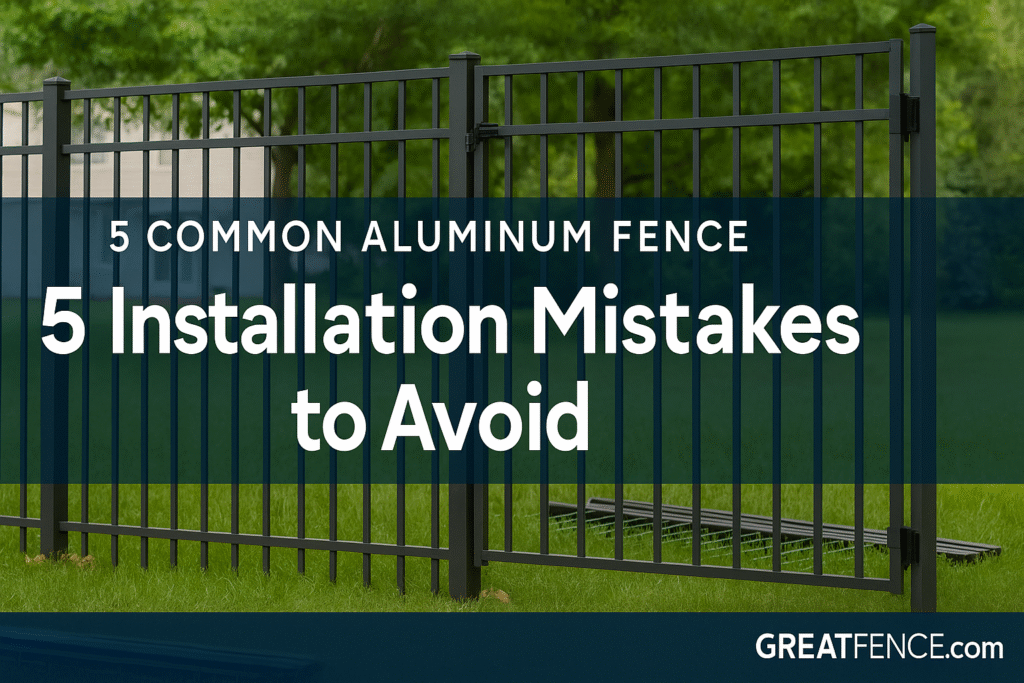5 Common Aluminum Fence Installation Mistakes (and How to Avoid Them)
After more than 21 years in the fencing industry, we’ve seen just about every installation mistake a homeowner can make. Aluminum fencing is designed for easy DIY installation, but small errors during setup can lead to big headaches down the road. Whether you’re tackling a backyard project or securing a commercial property, avoiding these common pitfalls will help you save time, money, and frustration. Here are the top five aluminum fence installation mistakes — and how to make sure your fence stands strong for years to come.
Digging All of Your Post Holes in Advance
Many first-time installers dig every post hole before installing a single panel. The problem is that line posts, corner posts, and end posts from GreatFence.com are factory-routed — which means that the horizontal rails of each fence panel are inserted (and set) into these posts. If you pre-dig, even a small miscalculation can throw off your entire layout.
How to Avoid It: Build your barrier as you go. After you’ve installed your first fence panel, you can set and install 2, 3, or even 4 panels at a time with confidence. This ensures each routed post is in exactly the right place. Homeowners and Contractors nationwide consistently tell us how easy it is to do this.
Setting Posts Without Proper Footings
osts are the foundation of your fence. Skipping concrete or using shallow footings leads to leaning posts within a few seasons.
How to Avoid It: Dig deep enough (24–36 inches depending on frost line) and secure posts with the proper mix of concrete. Always check your local building codes for post depth requirements.
Forgetting About Gate Width Definition
Gate widths are not the same as panel widths. Every gate width already includes the spacing required for hinges and the lock. Many DIYers forget this, which leads to incorrect post placement and a gate that won’t hang properly.
How to Avoid It: Always double-check your measurements before committing to gate post placement. Layout your aluminum single gate or double driveway gate on paper first — including hinge and latch spacing — so your posts are set exactly where they need to be.
Underbuying Materials
Running out of panels or posts mid-project is a costly mistake that delays installation and increases shipping costs.
How to Avoid It: It’s always better to have a little more product than you think you need. Trimming panels on-site is simple, and minor layout changes are common once you start building. Extra materials can also be useful later — for example, if a tree branch falls and damages a panel. Keep any leftover pieces stored safely for peace of mind. See our aluminum fence panels to plan your order.
Skipping Powder-Coat Care During Installation
Scratches during installation may not seem like a big deal, but they expose bare aluminum and can shorten the lifespan of your fence.
How to Avoid It: Handle panels carefully, avoid dragging them on concrete, and keep touch-up paint handy for small scratches. GreatFence’s lifetime powder-coat finish ensures your fence resists rust and fading when cared for properly.
Conclusion
Aluminum fencing is one of the easiest DIY fencing solutions available — as long as you avoid these common pitfalls. With careful planning, the right tools, and top-quality products from GreatFence.com, you’ll enjoy a strong, stylish fence that lasts a lifetime.
